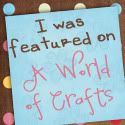skip to main |
skip to sidebar
Learning Grammar the Charlotte Mason Way With Sheldon's New Primary Language Lessons {A TOS Review}
When I was researching homeschooling, I was introduced to the philosophy of Charlotte Mason. One of the reasons we decided on the core curriculum we did was because of the Charlotte Mason influence. Though I didn't agree with all of her philosophy, and didn't feel I could use a complete Charlotte Mason curriculum, I was definitely drawn to her ideas of copywork, narration, and dictation. When we were offered the introductory grammar book titled Sheldon's New Primary Language Lessons from Brookdale House through the Schoolhouse Review Crew, I decided I would give it a try.

We received a physical copy of Sheldon's New Primary Language Lessons written by Kimberly D. Garcia. This 240 page softcover book contains an introduction, a table of contents, 96 lessons, and an appendix. Using copywork, narration, and dictation, along with fill-in-the-blank exercises, a child will learn about punctuation, parts of speech, sentences, paragraphs, and poetry. According to the preface, this book is updated from the original to make it more Charlotte Mason friendly. It is now more gentle and child-friendly, and it is in a workbook format.
As the book is appropriate for children in grades 3 to 6 as an introductory grammar book, I decided to use this with my my oldest homeschooling student, Tabitha, who is 8 years old. It is recommended that children on the older end of the age range do more writing in the exercises, while younger children complete them orally. I had Tabitha do a mixture of the two as she is quite capable of writing the answers. However, if she already had a bunch of writing in other subjects on any given day, we would then complete the exercises orally. We would complete 1-3 lessons during our English time. The lessons aren't designed to be done one per day. Sometimes a child will work on more than one a day, other times it will take a while to complete one lesson. It is important to go with what is comfortable for your child as well. Some of the lessons fit together well and can be done all in one sitting, as long as the student doesn't get tired of it.
The book begins with lessons on different types of sentences. These include: statements, questions, commands, and exclamations. At times there are pictures to study. The lesson then focuses on that picture, with the child being asked to focus on details while working on the concept being studied.
As you can see in the picture above of the first lesson, we were learning about statements. There were sentences to read that helped describe the picture. In this lesson they were all statements. Tabitha was then required to make her own statements about the picture in response to the sentences in the text box. Then in the second lesson there are questions asked and Tabitha needed to answer them using complete statements. The text boxes on the pages guide the parent in what to say about the concept being learned and gives questions that the parent is to ask the child.
Additional exercises include picture stories where Tabitha had to fill in the blanks (orally or written),
memory selections,
written copywork exercises,
and writing from dictation.
When Tabitha does the fill in the blank type exercises and the dictation, she has been printing. However, the copywork throughout the book is in print or cursive. Sometimes poetry is memorized and other times it is studied by answering questions about it. When there is a memory selection, it is recommended to learn a bit at a time, and then review it periodically.
The beginning lessons were a bit of a review for Tabitha, though it appears there are some things we never really covered, such as what punctuation is used for commands. It also seems that this review is good for Tabitha because she is not catching when she misses that a letter is to be capitalized. She knows it, but forgets it while doing the actual writing. I am looking forward to continuing with this book and seeing her improvements.
There were a few issues we had with the book. Tabitha would get frustrated because we were asked what we thought the name of the girl in the picture was, and then later on in the same lesson, the book already had a name for her. So, in the following lessons she couldn't use the name she chose as she would need to use the other name. I know this seems minor, but it was a bit frustrating for Tabitha.
I was also confused as to how a parent was supposed to read the dictation passages for the child. The student is introduced to the sentences before they are expected to dictate them. The child is to study the words and try to spell them, checking for any that might give them problems. The dictation will focus on the lessons learned prior to the dictation lesson. Then the child is to write the sentences as they are dictated to them by the parent. One problem, the lines the child is to write on are on the opposite page from the sentences.

We had to fold the page underneath so she couldn't see them, which would have turned it into a copywork exercise. However, I couldn't read the sentences to her. The sentences are also available in the appendix found in the back of the book. Yet again, I still couldn't reach those while Tabitha was writing. The only ways I can see making this work is to either cover the page with a piece of paper and remove it to read the sentence to her, or write them down on a separate piece of paper. It would have worked so much better if the appendix pages were perforated so the parent could keep them separated from the book.
I also wish the pictures that are used for the picture study were clearer so the details we are supposed to be studying are easily discerned.
We are enjoying this gentle approach to grammar, with its short lessons where we can move at a pace that s comfortable for Tabitha. This is a wonderful way for a child to learn about grammar. When using copywork, narration, and dictation, the child is exposed to the language and learns the proper way to use it. I think Tabitha enjoys the fact that she doesn't have to do a lot of writing as she can answer a lot of the questions orally.
You can find Brookdale House on Facebook, Twitter, Pinterest, and Google+.
My fellow Crew Mates and I were able to choose between quite a few different products for this review. Besides Sheldon's New Primary Language Lessons, the Crew has been using the following:
Drawing Around the World (Europe or USA), The Fun Spanish, The Grammar Workbook Set, and Writing Through History. There were 4 different time periods to choose from (Ancient History, Medieval History, Early Modern History, and Modern History). For each of these time periods they were able to choose between cursive or manuscript.
I invite you to click on the banner below to see what my fellow Crew Mates had to say about all these different products.







































![[PREMIO2009.png]](https://blogger.googleusercontent.com/img/b/R29vZ2xl/AVvXsEjXD_Gx-wZ9EM5hXKrEYLksEBkYfRQtmb8VDVTDG_yyLggQoFIstZsh4zszdG20KqErZicRzEhiNYLty7j3IMXJYsABqkXjr8pp-ncj71xCbpxlXGbGpZq2fTuDQqq1RMKV4DPcDBnBViA/s1600/PREMIO2009.png)




No comments:
Post a Comment
Thank you for visiting my blog today. I love to read your comments, so please leave me one if you have the time.
Blessings